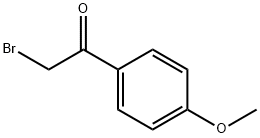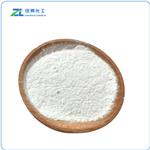off-white to light brown crystals or
2-Bromo-4'-methoxyacetophenone, is used as a cell-permeable, covalent and potent protein tyrosine phosphatase inhibitor.
2-Bromo-4'-methoxyacetophenone is a α-haloacetophenone derivatives tested for inhibition of protein tyrosine phosphatases SHP-1 and PTP1B.
Obtained by reaction of N-bromosuccinimide (NBS) with 4-methoxyacetophenone in the presence of trimethylsilyl trifluoromethanesulfonate (TMS-OTf) in acetonitrile at r.t. for 24 h (87%).
ki: 128 μmptp inhibitor ii is a protein tyrosine phosphatase (ptp) inhibitor.protein tyrosine phosphatases (ptps) are reported to be involved in the etiology of diabetes mellitus, neural diseases such as alzheimer and parkinson diseases, regulation of allergy and inflammation, or ptps are even regarded to be responsible for the pathogens.
in a previous study, it was found that all of the previously reported ptp inhibitors contained a negatively charged, nonhydrolyzable py mimetic as the core structure, such as malonates, aryl carboxylates, phosphonates, or cinnamates. the poor membrane permeability of these inhibitors might compromise their potential development. it was reported that several α-bromoacetophenone derivatives, such as ptp inhibitor ii, could act as fairly potent ptp inhibitors, by covalently alkylating the conserved catalytic cysteine in the ptp active site. since ptp inhibitor ii is neutral, it could readily diffuse into human b cells and inhibit the intracellular ptps. the sar study was performed with the catalytic domain of phosphatase shp-1, and ti was found that ptp inhibitor ii showed time-dependent inactivation of shp-1, consistent with the mechanism. furthermore, the potency of ptp inhibitor ii was described by an equilibrium constant ki, representing the dissociation constant of the noncovalent enzyme–inhibitor complex. ptp inhibitor ii bound with lower affinity than ptp inhibitor i with ki values of 128 μm [1].
[1] p. heneberg. use of protein tyrosine phosphatase inhibitors as promising targeted therapeutic drugs. current medicinal chemistry 16(6), 706-733 (2009).



